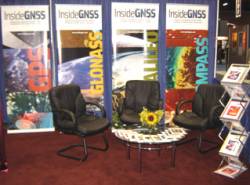 One of 12 magnetograms recorded at Greenwich Observatory during the Great Geomagnetic Storm of 1859
One of 12 magnetograms recorded at Greenwich Observatory during the Great Geomagnetic Storm of 1859 1996 soccer game in the Midwest, (Rick Dikeman image)
1996 soccer game in the Midwest, (Rick Dikeman image)
 Nouméa ground station after the flood
Nouméa ground station after the flood A pencil and a coffee cup show the size of NASA’s teeny tiny PhoneSat
A pencil and a coffee cup show the size of NASA’s teeny tiny PhoneSat Bonus Hotspot: Naro Tartaruga AUV
Bonus Hotspot: Naro Tartaruga AUV
 Pacific lamprey spawning (photo by Jeremy Monroe, Fresh Waters Illustrated)
Pacific lamprey spawning (photo by Jeremy Monroe, Fresh Waters Illustrated) “Return of the Bucentaurn to the Molo on Ascension Day”, by (Giovanni Antonio Canal) Canaletto
“Return of the Bucentaurn to the Molo on Ascension Day”, by (Giovanni Antonio Canal) Canaletto The U.S. Naval Observatory Alternate Master Clock at 2nd Space Operations Squadron, Schriever AFB in Colorado. This photo was taken in January, 2006 during the addition of a leap second. The USNO master clocks control GPS timing. They are accurate to within one second every 20 million years (Satellites are so picky! Humans, on the other hand, just want to know if we’re too late for lunch) USAF photo by A1C Jason Ridder.
The U.S. Naval Observatory Alternate Master Clock at 2nd Space Operations Squadron, Schriever AFB in Colorado. This photo was taken in January, 2006 during the addition of a leap second. The USNO master clocks control GPS timing. They are accurate to within one second every 20 million years (Satellites are so picky! Humans, on the other hand, just want to know if we’re too late for lunch) USAF photo by A1C Jason Ridder.  Detail of Compass/ BeiDou2 system diagram
Detail of Compass/ BeiDou2 system diagram Hotspot 6: Beluga A300 600ST
Hotspot 6: Beluga A300 600ST

1. CANADA AND U.S. FIGHT OVER OREGON – AND GPS IS THERE!
Kingston, Ontario, Canada.
√ The Canadian navy built the Murney Tower when Canada and the U.S. fought over Oregon in 1846. Cruises of this Kingston, Ontario region feature the world’s first wireless GPS-triggered audio tours — in six languages, no less. The UNESCO World Heritage Site features old fortifications guarding the Rideau Canal.
1. CANADA AND U.S. FIGHT OVER OREGON – AND GPS IS THERE!
Kingston, Ontario, Canada.
√ The Canadian navy built the Murney Tower when Canada and the U.S. fought over Oregon in 1846. Cruises of this Kingston, Ontario region feature the world’s first wireless GPS-triggered audio tours — in six languages, no less. The UNESCO World Heritage Site features old fortifications guarding the Rideau Canal.
2. GPS AND THE GAS CRISIS
New Jersey
√ Gas costs $4 per gallon in the U.S. How to save money? A popular idea in the blogosphere: use a PND. Mapping software company ALK of Princeton, New Jersey, noticed that high gas prices have increased the number of drivers using GPS to avoid toll roads and find shortest time, distance, and least congested route options.
3. GPS FIGHTS HIGH SEAS BANDITS
Georgetown, Guyana
√ The Guyana government is trying to protect its fishers by installing submersible radios and communications systems — including a GPS-equipped wristwatch — on their boats to protect them against “high seas bandits,” according to the agriculture minister in his announcement on March 31. Pirates killed at least nine fishermen last year and have stolen fish, nets and boats off the coasts of Guyana, Suriname, and French Guiana.
4. GPS III CONTRACT AWARDED . . . FINALLY
King of Prussia, Pennsylvania
√ A team led by Lockheed Martin Space Systems Company (King of Prussia, Pennsylvania), won U. S. Air Force approval to build the GPS Block IIIA satellites under a potential $3.568-billion contract. The May 15 decision covers the first of three sets of Block III satellites scheduled to begin launching in 2014. (See related 360 Degrees article in this issue.)
5. IT’S ALIVE! GIOVE-B ON THE AIR
Noordwijk, Netherlands
√ GIOVE-B satellite began transmitting signals on May 7, including the common GPS-Galileo civil signal MBOC, according to ESA ESTEC in Noordwijk, Netherlands. (See related 360 Degrees article in this issue.)
6. BEIDOU TO THE RESCUE
Chengdu, Sichuan, China
√ Compass/Beidou, China’s GNSS, was used after the devastating May 12 earthquake in China’s Sichuan Province. PLA Daily said the Beidou System Operation Center dispatched its first emergency team on May 15, which made 14,000 position fixes and 12,000 communications in areas where other links were down. They used 20 cell-phone-like terminals that sent up to 40 words at a time to the ops center.




